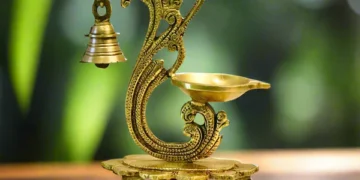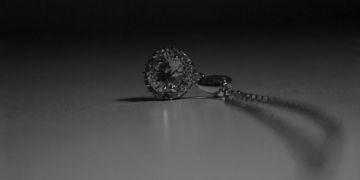
Proper watering is an essential part of gardening for three main reasons: the plants need the exact amount of water to thrive, wasting water hurts the environment, and you want to keep your water bills low. These are the rules that every green thumb goes by but watering the garden properly is easier said than done.
There are many hacks and hidden snares even the most passionate of gardeners still haven’t encountered so it would be useful for them, as well as beginners, to read the following 12 tips on how to water the garden in the most efficient manner possible.
1. Choose drip irrigation over sprinklers
For regions that don’t receive a lot of rainfall yearly, the best way to water your garden is drip irrigation. This method is widely used on larger agricultural estates but it can serve its purpose in your backyard garden as well. A cheaper alternative to drip irrigation are water hoses with tiny holes in them; a rudimentary method, yet quite effective.
Drip irrigation is better than the use of sprinklers because it delivers water closet to the ground, thus preventing water waste. A ground sprinkler might cover a large surface area but it dissipates water erratically, wasting water indiscriminately.
Another advantage of drip irrigation is that it can be set on time to adjust for the rain season. By looking at the weather forecast or at the sky, you can shut off the drip irrigation system in your garden in order not to soak the ground, causing the plants’ root system to die.
2. Not all pots are the same
Green thumbs have learned an important thing about clay pots over the years: they are porous. This means they will suck moisture from potting soil over time. The end result is that the walls of a terra cotta pot always be cold and wet to touch because they have imbibed some of the water intended for the plants.
Metal pots, on the other hand, heat up really quickly, which only speeds up the loss of moisture inside the soil. Keeping metal pots is the shade is the only sound solution because if you leave them exposed to sunlight in summer, they will annul all your efforts to water the plants inside them.
Although they might not seem glamorous, plastic and glazed pots are the best kinds of flower beds. Plastic is a very resilient material that won’t take any water in, nor will it heat up too much in the same. The same goes for glazed pots since the glazing corrects all the design flaws clay pots have, namely, high absorbency.
The only issue with plastic and clay pots concerns their aesthetics. No matter how much gardening equipment manufacturers try, they can never come up with an aesthetically pleasing flower pot made of plastic. Luckily, you can always paint over plastic and especially glazed pots. Think of them as of a circular canvas for you or your children to express your artistic side. Furthermore, you can group pots together, thus concealing the ones that are damaged or plain ugly.
3. How to water by hand
Although drip irrigation is ideal for watering the entire garden, some plants might need extra care or a special watering regime. In these instances, it is time to take matters into your own hands, quite literally.
Watering by hands is a selective watering method that is used for plants that can be considered exotic and require different watering cycles from the rest of the garden and for plants that are drying out and emergency watering.
In order to tell correctly if a plant is getting enough water, check if the soil around them is moist. You do this by burrowing a small hole with your trusty trowel. A more rudimentary method is to poke your finger inside the ground if the root system isn’t particularly deep. Cool and damp earth means that you should move on with the watering can.
4. When to water
The trick with watering your garden is that you shouldn’t adjust the timing to your free time but to the plants’ needs. Many rookie gardeners make the mistake of watering when they come from work and rest a bit. By the time they pick up the watering can, it’s nightfall soon, which means the ground and the foliage won’t have the chance to dry properly before the night chill sets in.
In order to avoid frostbite on your plants, time the watering better. The ideal time is early in the morning because then the foliage will get exposed to sunlight that will help it soak in all the water. Plants will take in the minerals from the water they need by noon, roughly estimated, and the rest of the day all the excess water will slowly evaporate.
5. Adding organic matter to the soil
Speaking of helping plants absorb water better, this process has to do a lot with the soil itself. Namely, soils rich in organic matter find it easier to absorb moisture and more importantly, retain it over a prolonged period.
Adding compost or manure to flower beds is an excellent method to increase the moisture inside the soil without watering too much. In summer, they layer of compost that you spread over the beds should be thin so you can fork it easily. In winter, on the other hand, the compost should be thicker and you shouldn’t spread it as much.
6. Bonus tip: How to compost
You are probably thinking right now that composting is too much of a hustle and you’re probably looking into the option of purchasing ready-made manure at the nearest garden centre. Relax, there is nothing complicated about composting as it is an excellent way to preserve water, recycle, and lower your utility bills.
All you require is a compost box no bigger than a square meter in size. You can easily patch it together from the wood lying around the garden. Once you place the compost box in one corner of the garden, all you need to do is deposit organic waste inside. Everything from fallen leaves to orange peel constitutes organic waste so the compost box will fill up quickly.
7. Fold up the hose hassle-free
We all enjoy standing in the middle of the garden holding a hose and watering the garden. However, after this blissful moment, comes the dreadful job of folding up the water hose. It gets caught up on rocks nearly every time and you have to deal with knots every time, which makes you kick the damn thing straight out of the garden!
Since a garden cannot do without a water hose, a neater solution instead of wrestling with it every time you use it is to get a retractable hose reel. It is wall-mounted and has a locking system which makes extending and retracting the hose a walk in the park compared to the previous manual method. What is more, there is even a padlock for the retractable hose reel that secures it into place and prevents anyone from stealing it. You can’t say that manufacturers haven’t thought of everything!
8. Adding a layer of mulch
Another useful method to slow down the evaporation of water from the soil is to add mulch to the top layer of soil. A layer of mulch at least 5cm thick onto moist soil helps it retain water mu(l)ch more efficiently. Summertime is the period that mulching is the most effective.
As in the case of compost, there is no need to waste money on ready-made mulch. Sure, you can get colourful mulch from a garden centre but you can create your own from the materials normally found in your garden. Tree bark, wood chips, and pebbles all make for ideal mulch to be spread over the garden. Even grass clippings that remain after you mown your lawn can be used as mulch, doubling as a fertilizer rich in nitrogen.
9. Adjust your aim
You might think that watering by hand is simple enough but you really need to aim carefully. Even if you’re using a spray gun, you should avoid hitting the foliage but rather aim for the base of the plants. Even the base should be hit directly but a bit on the side.
Furthermore, you should soak the plants every now and then, as this method is far better than watering the plants a little and doing it often. Such watering cycles are the nearest to natural ones.
10. Start collecting and using rainwater
Apart from composting, another great way to save water is to water the garden using rainwater you have previously collected. An alternative use for rainwater is to use it as drinking water but you’ll need to get a good water purifier.
As far as the garden is concerned, you’ll need to modify the drainpipes coming down from the roof the house, the shed or a greenhouse if you have one. All that water needs to be directed into large barrels that would sit at the bottom of the spout. Once you link the barrels to each other, you are ready to attach the garden hose and start watering the garden in the most energy-saving manner.
11. Weeding out the garden
Weeds don’t just look awful, as they are the surest sign that the garden is not looked well after but they literally suffocate the plant life. Weeds compete with plants for water and nutrients from the soil so it is not long before your verdant vegetable plants succumb to this invasive species.
The easiest way to destroy weeds is to hoe them over and then manually extract their roots from the ground. Unless you take out the roots, weeds will grow back again in a matter of weeks. Although there are weeders that help you carry out this task, it is still a tiresome task that no gardener looks forward to.
A wiser solution is to never let weeds take root in the first place. One method of preventing weeds from invading your garden is the aforementioned mulch. Since it is spread around the plant base, it effectively deprives weeds of sun and water. Also, the next time you visit a garden centre, be sure to look for chemicals that kill weeds, as they are also effective but be aware that they can harm other plants so read the instructions carefully.
12. Water less often but deeper
Plants need a lot of care and many people think that this care is reflected through constant, nearly daily watering. As you probably already know, overwatering plants means that their roots will start to rot, debilitating the plants to take water in and they die soon afterwards.
The best advice on how often to water your plants is to follow the weather forecast and learn about the different plants, vegetables, and flowers you have in your garden. They all have individual watering cycles so you should water them when it becomes apparent that they need water. In potted houseplants, you can notice this when the dirt starts “peeling off” the edge of the flower pot.
When it comes to garden plants, you should water them “deep.” This involves watering slowly so the water gets the chance to sink inside the ground naturally. If you notice that water is running off (especially in potted plants) or evaporating quickly, you have poured too much mater.
In order to become a green thumb, you must care for the wellbeing of all the plants in your garden and you need to play it smart. We hope that the 12 smart and detailed tips listed above will help you with the latter.
























































